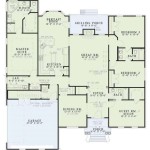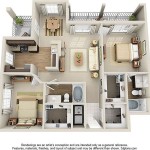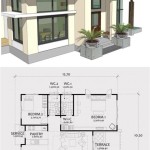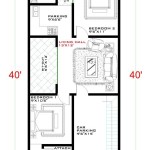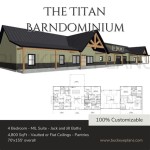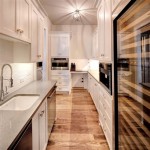Simple Village House Plans With Photos Free
The appeal of simple village houses lies in their functionality, affordability, and ability to seamlessly integrate with the natural surroundings. For many, the dream of owning a home extends beyond opulent mansions to encompass a modest dwelling that provides shelter, comfort, and a connection to a more grounded lifestyle. The availability of simple village house plans, often offered with accompanying photographic examples, offers a vital resource for individuals and families seeking to build their own homes in rural or semi-rural settings. This article explores the key features, benefits, and considerations involved in selecting and implementing simple village house plans, emphasizing the importance of accessing free resources while prioritizing structural integrity and sustainable design principles.
The term "simple village house plans" encompasses a wide range of architectural styles and floor plans. These designs typically prioritize efficiency and resourcefulness, utilizing locally sourced materials and minimizing complex construction techniques. The aesthetic often leans towards traditional forms, reflecting the vernacular architecture of the region, although modern interpretations that incorporate sustainable elements are also increasingly common. The availability of free plans provides a starting point for aspiring homeowners, allowing them to visualize potential designs and adapt them to their specific needs and site conditions.
Accessing free house plans, especially those accompanied by photographs, can significantly aid in the planning process. The photographs offer a visual representation of the finished product, allowing individuals to assess the suitability of the design for their aesthetic preferences and lifestyle requirements. Furthermore, these visual aids can inspire modifications and customization, ensuring that the final structure reflects the homeowner's individual needs and desires. However, it is crucial to recognize that free plans often require professional review and adaptation to meet local building codes and ensure structural safety.
Key Features of Simple Village House Plans
Simple village house plans are characterized by several distinct features that contribute to their affordability and practicality. These features are often rooted in traditional building practices and prioritize resource efficiency, making them well-suited for rural environments where access to specialized materials and construction expertise may be limited.
One of the defining characteristics is the compact footprint. These houses typically feature smaller square footage compared to suburban or urban dwellings, minimizing the amount of materials required and reducing construction costs. This smaller size also contributes to lower energy consumption for heating and cooling, making them more environmentally friendly.
Another common feature is the use of simple, rectangular or square floor plans. These basic shapes are easier to construct and require less intricate framing, reducing labor costs and minimizing material waste. This simplicity extends to the roof design, which often features a gable or hip roof, both of which are relatively straightforward to build and provide effective weather protection.
Furthermore, simple village house plans often incorporate open-plan living spaces, combining the kitchen, dining, and living areas into a single, multi-functional room. This arrangement maximizes the usable space and promotes social interaction within the household. Bedrooms are typically smaller and designed for functionality, prioritizing sleep and privacy.
The use of locally sourced materials is another hallmark of simple village house plans. This reduces transportation costs and supports local economies. Common materials include timber, brick, stone, and earth-based construction methods such as rammed earth or adobe, depending on the availability and climate of the region.
Benefits of Utilizing Free House Plans With Photos
The primary benefit of utilizing free house plans with photos is the cost savings associated with avoiding the expense of hiring an architect or designer. This can be particularly significant for individuals on a tight budget or those seeking to build a simple, functional home without elaborate design features. The availability of visual aids, such as photographs, can further enhance the planning process by providing a clear understanding of the final product and inspiring customization.
Free plans also provide a valuable starting point for the design process. They offer a range of options to consider, allowing individuals to explore different floor plans, layouts, and architectural styles. This exploration can help to refine their vision for their dream home and identify specific features that are important to them.
The availability of photos accompanying the plans significantly enhances the visualization process. These images provide a tangible representation of the finished house, allowing individuals to assess its aesthetic appeal and determine its suitability for their lifestyle. Photos can also highlight specific design details and construction techniques that might not be readily apparent from the plan drawings alone.
Furthermore, free plans can be easily adapted to meet individual needs and site conditions. While the basic design remains the same, homeowners can modify the layout, add or remove features, and adjust the dimensions to better suit their requirements. This flexibility allows for greater customization and ensures that the final structure is perfectly tailored to the homeowner's specific needs.
However, it is imperative to reiterate the importance of professional review. Free plans, while valuable resources, are often not site-specific and may not comply with local building codes. A qualified architect or structural engineer should always be consulted to ensure that the design is structurally sound and meets all applicable regulations.
Considerations for Implementing Simple Village House Plans
While free simple village house plans offer a cost-effective and convenient starting point for home construction, several crucial considerations must be addressed to ensure a successful and safe building project. These considerations encompass site suitability, structural integrity, compliance with building codes, and sustainable design principles.
The first consideration is site suitability. The chosen house plan must be appropriate for the specific characteristics of the building site, including its topography, soil conditions, climate, and orientation. A plan designed for a flat, sunny site may not be suitable for a sloping, shaded location. Soil testing is crucial to determine the load-bearing capacity of the ground and ensure that the foundation design is adequate.
Structural integrity is paramount. Free plans often lack the detailed structural calculations necessary to ensure that the building can withstand wind loads, seismic activity, and other environmental factors. A structural engineer should be consulted to review the plan and make any necessary modifications to ensure that the structure is safe and durable. This is especially important in areas prone to natural disasters.
Compliance with local building codes is another crucial consideration. Building codes vary from region to region and are designed to ensure the safety and health of occupants. A qualified architect or engineer can help to navigate the complex requirements of local building codes and ensure that the design complies with all applicable regulations. This may involve modifying the plan to meet specific requirements for fire safety, ventilation, insulation, and accessibility.
Sustainable design principles should also be incorporated into the design. This includes selecting energy-efficient materials, maximizing natural light and ventilation, and incorporating water conservation measures. Sustainable design not only reduces the environmental impact of the building but also lowers operating costs over the long term. Features such as solar panels, rainwater harvesting systems, and greywater recycling can further enhance the sustainability of the home.
Finally, it is important to consider the long-term maintenance requirements of the house. Simple designs that utilize durable, low-maintenance materials will reduce the need for costly repairs and replacements over time. Proper planning and construction techniques can also minimize the risk of moisture damage, pest infestations, and other common problems.

Simple Village House Plans With Auto Cad Drawings

Simple 3 Room House Plan Pictures 4 Nethouseplans

Small Village House Plans With 3 Bedroom Beautiful N Style Home 26x26 Feet 75 Gaj Walkthrough 2024 Kk Design

3 Bedroom House Plans Home Designs Nethouseplans

27 35 House Plan 2 Room Design In Village

Home Design 10x16m With 3 Bedrooms Ideas 204

Top 20 Village House Design I Home Idea Great For Build N Style
Free House Plans Blueprints Civiconcepts

Premium South N House Plans Home Designs Nethouseplans

Free Simple Two Story House Plans
Related Posts

